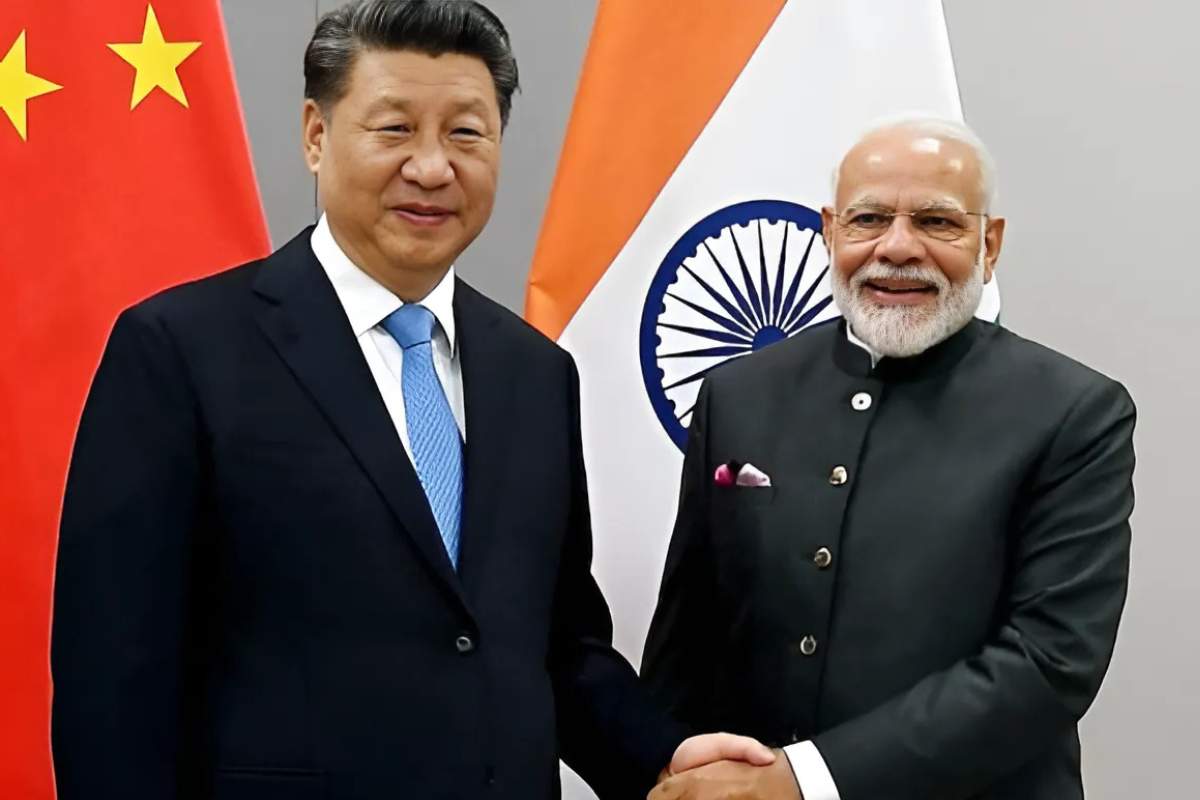The international economic scene is once again primed for a spectacular turn, as the second term of Donald Trump brings a new round of trade tension, above all with China. In a step that has echoed worldwide markets, America has slapped large tariffs on exports coming in from the Asian economic giant, opening up a revived trade war of global implications on the health of the world economy. The tariffs have not been discreet; they’ve jumped to a whopping 145% on a large category of Chinese products coming into the American borders. President Trump’s trade policy is a two-part system: a base tariff levied nearly across the board on imports, and supplemented by escalated “reciprocal” tariffs directed specifically at countries with a large trade surplus with the US.
With its huge trade surplus and subsequent retaliatory measures, China is currently incurring the burden of these rising tariffs. This dramatic escalation of trade tensions automatically raises an important question: could these harsh tariffs compel a basic shift in China’s economic game plan, with the possibility of increased focus on its economic ties with India?
This blog will discuss the far-reaching effects of these tariffs on the economic welfare of China, discuss the status quo of economic relations between India and China, and discuss the many reasons why China may feel obligated to create closer economic ties with India as a strategic reaction to the current trade war.
The Swift Escalation: A More Aggressive Tariff Strategy
The pace and magnitude of the Trump administration’s second-term tariff increases in its tariff war against China indicate a far more assertive trade policy with China than he pursued in his first term.
Several stories point to swift imposition and extraordinarily high levels of these tariffs as indicative of an intentional and muscular policy course.
This comes in stark relief to the implied potential for greater measured or refined policy that possibly could have been expected within a second term in office. Moreover, the “reciprocal” intent behind these tariffs, presented as action to address fair trade with countries abroad, has disproportionately hit China because of the current imbalance between the two financial giants and resulting Chinese retaliation measures. The application of such hefty tariffs on Chinese products, especially in response to China’s retaliation with tariffs on US products, heavily implies that the US policy is deliberately crafted to impose strong economic pressure on China, hence possibly generating an even greater desire on the part of China to seek out other economic allies aggressively.
The Heavy Toll: Economic Repercussions for China
The United States-China trade relationship has been progressively characterized by rising tariffs, particularly under President Trump. The first shots were fired in 2018 under the authority of Section 301 of the Trade Act, directed at certain sections of Chinese products. Early actions included:
- July 2018: Tariffs imposed on $34 billion of goods at 25%.
- August 2018: Further tariffs on another $16 billion of goods, also 25%.
- September 2018: A 10% tariff was imposed on a much broader range of goods with a value of $200 billion.
- June 2019: The 10% tariff on the $200 billion list was raised to 25%.
The year 2025 saw a remarkable escalation of this trade war, with the imposition of tariffs under the International Emergency Economic Powers Act (IEEPA) on all Chinese imports, as well as the imposition of reciprocal tariffs. These actions have created a cumulative tariff rate rising as high as 145% on Chinese imports into the US market.
The economic effects of these tariffs on China’s economy are significant. The imposition of such high tariffs greatly reduces the competitiveness of Chinese exports in the US market, which may result in:
- Reduced production.
- A general economic slowdown.
- Interference with global supply chains as companies must restructure their sourcing and manufacturing practices to avoid the high tariff expense.
Specific industries within China that heavily rely on exports to the US are facing considerable pressure, including:
- Electronics.
- Textiles.
- Sectors involved in the production of critical minerals.
China has retaliated against US tariffs by enacting its retaliatory tariffs on US goods, further fueling the trade war and hurting the exchange of bilateral trade. The overall impact of the trade conflict has caused concerns about the possibility of a wider global economic slowdown.
The levying of tariff rates of up to 145% is so severe that it would practically constitute a trade embargo on most low-value products.
Such a tax level renders it economically impossible for Chinese exporters to continue exporting cheap goods to the US, prompting a complete overhaul of China’s export strategy towards targeting alternative markets or higher-value products.
China’s response to the tariffs, including the imposition of retaliatory tariffs and the institution of export controls on key minerals, suggests a willingness to endure a long trade war.
These measures also highlight China’s weaknesses in some key areas and may encourage other countries to find alternative sources for critical materials.
China and India: An Evolving Economic Narrative
The economic tie between India and China has changed dramatically over the last few decades. China has emerged as India’s largest goods trading partner, a position that it has enjoyed for quite some time. The bilateral trade between the two countries has seen remarkable growth over the last decade to reach record levels. Though this trade is marked by a huge and increasing trade deficit for India, as India imports much more goods from China than it exports.
Main features of this trade are:
- Exports of industrial products, electronics, machines, and chemicals by China to India.
- The main exports of raw materials and some manufactured products by India to China.
Although bilateral investment flows between the two nations have been increasing, they are still modest compared to the overall trade volumes. Compounding this economic relationship’s complexity is also the chronic geopolitical tensions and long-standing border disputes, which loom over the possibility of greater cooperation. Even with the large trade deficit that India has with China, the growing total trade between the two countries indicates rising economic interdependence that can be further utilized. The steady growth of total trade indicates that the two countries are seeing economic value in this exchange despite the deficit.
This already established basis of trade could be further developed if China proactively pursues other markets or supply chain allies as a reaction to the US tariffs.
But the serious geopolitical tensions and security issues that India has with China might serve as a significant hindrance to a speedy and extensive deepening of economic relations, even if extrinsic drivers such as the US tariffs provide a powerful incentive for this kind of development.
The historical suspicion, outstanding border conflicts, and continuing strategic competition between the two Asian giants are non-economic considerations that might restrict the degree to which India would be inclined to become a leading economic partner for China as a direct counter-measure to the trade pressures of the United States.
The Push Factor: Tariffs as a Catalyst for China-India Engagement
The imposition of high tariffs by the US may increase China’s need for a closer economic partnership with India for several compelling reasons. India’s huge and fast-growing consumer market is an important alternative destination for Chinese goods now subject to prohibitive tariffs in the United States. Whereas China’s domestic consumption is being confronted with certain difficulties, the size of India’s market, with its increasing middle class, provides Chinese producers with one possible source for offsetting losses from lower US sales. The Indian market is, however, not identical and has different purchasing power levels as well as different consumer preferences that can vary tremendously from the American market. In addition, India offers potential as a hub for Chinese producers that are seeking to diversify their supply chains to reduce the effect of US tariffs.
India’s manufacturing industry is increasing, fueled by government programs such as “Make in India.”
This might provide Chinese enterprises a chance to set up production hubs in India, possibly evading the massive US tariffs. But there are still issues of India’s infrastructure, availability of skilled manpower, and regulatory framework, which may act as a dampener to large-scale manufacturing transitions. There is also the risk of China trying to divert its exports through India to circumvent US tariffs, though such tactics are likely to come under greater scrutiny from US authorities. Geopolitical factors also come into play. Greater economic integration with India can be a strategic step for China to reinforce its status in Asia and neutralize US influence in the region.
China has been actively pursuing to promote itself as a leader of the Third World and a solid advocate of multilateralism compared to the relatively more unilateral US policy under President Trump. As India plays a strategic location in the Indo-Pacific region, developing closer economic relations may form an integral part of China’s overall geopolitical design. India’s large domestic market offers China considerable potential to compensate in part for economic losses resulting from lower exports to the US. Yet, China’s experience with trade deficits with India, combined with India’s intense focus on stimulating domestic production, means that simply diverting goods destined for the US market to India may not be an easy fix. In addition, although supply chain diversification to India represents a possible long-term solution for China to cushion the effect of US tariffs, the current infrastructure constraints and bureaucratic barriers in India may limit the pace and total magnitude of this transition. Massive investment and policy change in India would most likely be required for it to become an extensive alternative manufacturing hub for Chinese businesses wanting to skirt the lofty tariffs levied by the United States.
Expert Insights: Steering Through the Changing Sands
Several analyses and opinions have suggested that the US-China trade tensions would spur a realignment of China-India economic ties. Others think that India is well-placed to benefit from the trade war, possibly seeing a growth in its manufacturing base and overall exports. America, for its part, increasingly sees India as a key ally in its quest to diversify global supply chains away from China. Interestingly, China itself has appealed to India to band together in challenging the US tariffs, highlighting mutual benefits inherent to their current relationship.
Concern, though, has still been voiced among experts concerning India’s immediate ability to fulfill the role in which China acts as a production manufacturing center throughout the world, largely based on prior existing problems throughout India’s financial infrastructure and in its regulatory body. In addition, some analysts have argued that Southeast Asian countries, which have also been targeted by Trump’s tariffs, could be driven closer to economic alignment with China. This would, in turn, diminish China’s necessity to depend only on India as a substitute economic partner. Opinions of experts seem to be somewhat divided on how much India can actually “steal China’s thunder” in the world economic arena. Though the situation today holds enormous promise for India, the realization of this potential will demand overcoming present structural constraints in its economy.
The repeated reference to problems like poor infrastructure and lack of skilled labor implies that the transition will not be a smooth one and will require great effort and conscious policy actions on the part of India.
Additionally, China’s energetic overtures to other countries in Asia, such as Vietnam and Malaysia, suggest that its approach to dealing with the challenges of US tariffs would be a more extensive diversification of its economic alliances throughout the region, but not necessarily prioritizing India alone.
Roadblocks Ahead: Challenges to Deeper Cooperation
As much as the prospects of greater economic interaction, several hurdles and constraints may hold back much tighter economic relations between China and India due to the US tariffs. One key hindrance is the already huge trade imbalance in favor of China, which has been a continuous Indian concern. The ongoing geopolitical rivalries, open border disputes, and long-standing distrust between the two countries also pose a significant barrier to closer economic collaboration.
India has concerns regarding national security and keeps a watchful eye on Chinese investment, especially in areas that are considered sensitive. In addition, the two countries are rivals in several economic industries and follow different models of economic development. The potential also exists that China may choose to use other neighboring nations as transit routes for tariff evasion, and possibly reduce its dependence on India. Lastly, India’s current tariffs on imports would potentially have to be lowered to allow for increased trade with China.
India’s long-held concerns about the significant trade deficit it has with China, and the potential negative impact of this imbalance on its domestic industries, may leave it reluctant to raise its dependence on Chinese imports significantly, even when China is under immense pressure from US tariffs. India’s interest may be in diminishing this deficit instead of becoming a main economic destination of China’s tariff-hit goods. Additionally, the extremely ingrained geopolitical competition and security issues that have traditionally defined relations between China and India are apt to continue to pose a substantial impediment to the emergence of a genuinely intimate and confiding economic partnership, no matter what outside pressures the US tariffs build. These underlying problems will most likely continue to shape and possibly constrain the nature and extent of any greater economic collaboration between the two countries.
Conclusion: Charting a New Course in Asia
The analysis explicitly shows that President Trump’s tariffs have inflicted a big economic hit on China and have prompted Beijing to seriously seek other markets and reformulate its global supply chain strategies with a compelling necessity. India, with its huge and growing consumer base and enhanced manufacturing capacities, surely offers a possible path for China to gain some relief from the pressure of the US trade policy.
But the path to a decidedly heightened economic association between China and India is replete with intricacies and constraints. The longstanding trade surplus in China’s favor, the entrenched geopolitical tensions and historical distrust, and India’s strategic economic interests all indicate that an absolute dependence on India as a first-best solution to the US tariff challenge is improbable. However, growth in economic interactions between India and China is likely. China would find it logical to access the Indian market for its products, and some of China’s producers could look to India as a diversification point for their outputs. The nature and speed of this change will largely depend on the current hurdles and the two governments’ strategic moves. The shifting dynamics between the United States, China, and India are set to redefine the economic context of Asia, but the exact outlines of this new chapter still have to be written. While the tariff storm whipped up by the US may bring China and India closer together, the deeper realities of their complicated relationship will ultimately determine the form and extent of their future economic engagement.








